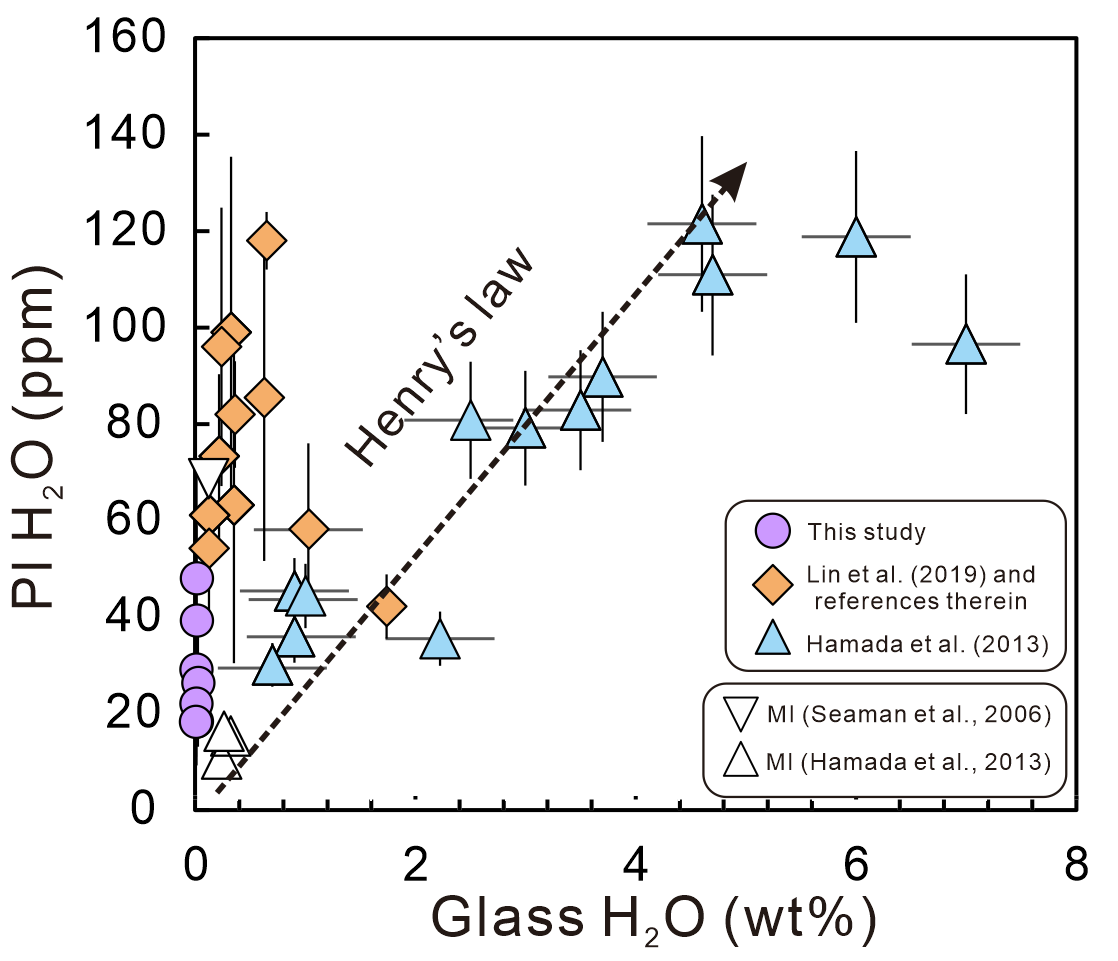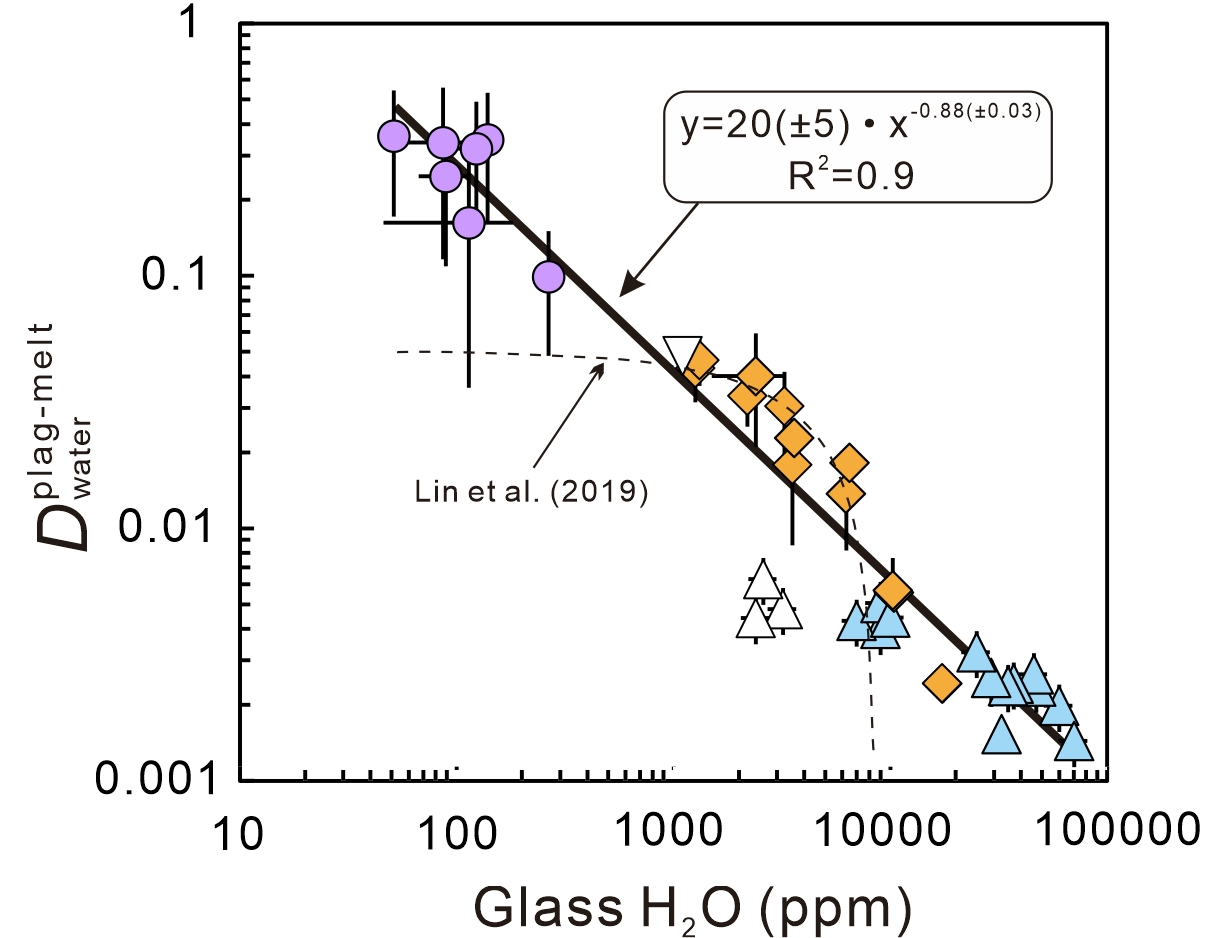New study from a team of HPSATR scientists led by Dr. Yanhao Lin, in collaboration with Prof. Wim van Westrenen from Vrije Universiteit Amsterdam, made a new progress on partitioning behavior of hydrogen (water) between plagioclase and basaltic melts, providing new insights into the water content of the Moon’s interior. This study quantifies the hydrogen (water) partition coefficient between plagioclase crystals and melts under water-poor conditions through a series of high-temperature experiments, and finds that the partition coefficient for hydrogen (water) depends on the water content in the equilibrium melt. The result shows the partitioning behavior of hydrogen that does not follow the classical Henry’s law, but depends on the water content in the melt. This suggests that the water content in the early Moon’s interior may have been lower than previously anticipated. This work, titled "Non-Henrian behavior of hydrogen in plagioclase - basaltic melt partitioning", is recently published in Chemical Geology.
The Moon’s crust is mainly composed of plagioclase, which crystallized directly from the Lunar Magma Ocean (LMO). According to Henry’s Law, if the partition coefficient of hydrogen(water) between plagioclase crystals and coexisting melts is known, the water content of plagioclase can be used to estimate the water content of the LMO at the time of its crystallization. However, previously reported hydrogen partition coefficients are extremely discrete, and the lack of hydrogen partition coefficients under low water conditions leads to large uncertainties in estimating the water content of LMO.

Fig. 1. Water content of plagioclase and glass measured in this study plotted against the reported data.
In this study, the water content in plagioclase and coexisting melts was measured under water-poor conditions through a series of high-temperature experiments. The results show that the hydrogen partition coefficients between plagioclase and melt range from 0.10 ± 0.05 to 0.36 ± 0.19 at melt water contents below 300 ppm, which are the highest partition coefficient values reported to date. By combining with all reported partition coefficient data, it shows that the hydrogen(water) partitioning behavior that does not obey classic Henry’s law (Fig. 1). This may be related to the bonding state of hydrogen in the melt. The partitioning behavior of hydrogen between plagioclase and basalt melt depend on the water content of the basaltic melt, which can be described by a power-law relations. (Fig. 2).

Fig. 2. Hydrogen (water) partition coefficient as a function of glass water content derived from this study and literature data.
This study has important implications for understanding the evolution of the lunar volatile evolution. If lunar plagioclase were crystalized from, and in equilibrium with, the Lunar Magma Ocean, then the Moon’s interior should have contained less than 14 ppm water at 95% LMO crystallization. This view supports the idea that the Moon was water-poor at the end of the magma ocean crystallization, which is consistent with the water-poor lunar mantle source implied by Apollo lunar samples, and the recent Chang’E 5 lunar samples. The higher water content of the present lunar interior may have required the addition of exogenous volatile contribution after the LMO stage.
近日,北京高压科学研究中心林彦蒿课题组与阿姆斯特丹自由大学Wim van Westrenen教授合作,在斜长石矿物-玄武岩熔体间氢(水)分配规律领域取得新进展,为月球内部水含量提供了新的见解。该研究通过高温实验,在贫水环境下量化了月球在岩浆洋(LMO)阶段的斜长石晶体与熔体之间的氢分配系数。结合历史上已发表的数据,该研究小组发现氢(水)的分配系数依赖于平衡熔体中的水含量,表现出不遵循亨利定律的分配行为,这表明早期月球内部的水含量可能低于先前的预期。相关研究成果以“Non-Henrian behavior of hydrogen in plagioclase - basaltic melt partitioning”为题发表于《Chemical Geology》,文章的第一作者为北京高压科学研究中心的博士后徐永江。
